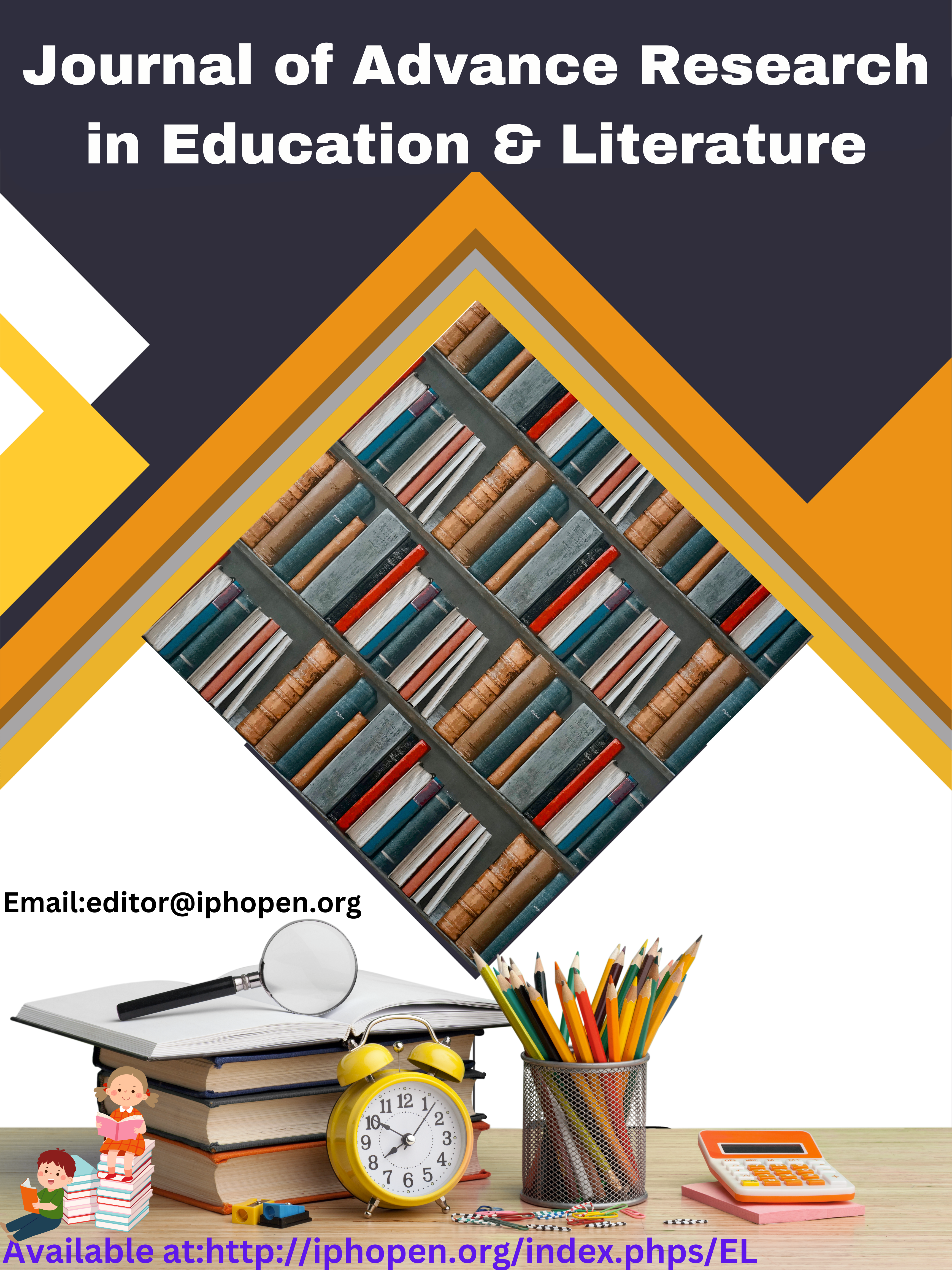Neurodidactic Procedures Enhanced by Artificial Intelligence for the Stimulation of Linguistic Development in Children with Hearing Impairment in Primary Education
DOI:
https://doi.org/10.5281/zenodo.17301306Keywords:
Language, Hearing impairment, Stimulation, Neuroscience, Artificial intelligence, Sign language, Ontogenetic developmentAbstract
This study addresses the process of language stimulation in children with hearing impairment through the implementation of neuroscientific methods associated with artificial intelligence (AI). Emphasis is placed on an integrative approach that considers brain plasticity and adapts educational strategies to the individual needs of each child. The visual, motor, and verbal phases of language development are described, highlighting the importance of learning sign language as a foundation for oral language acquisition. The integration of visuo-motor-verbal educational resources and interactive play environments fosters motivation and communicative development, while the application of AI-based technologies optimizes personalization and monitoring of the learning process. Furthermore, the essential role of educators and families in intervention is underscored. Findings confirm that combining neuroscience and artificial intelligence significantly enhances the ontogenetic development of language in children with hearing impairment, contributing to their social and educational inclusion.
References
Basil, C., & Puig, M. (1990). Augmentative communication: Alternative systems for people with deficiencies
in verbal communication . Masson.
Berent, G. P., Kelly, R. R., Schmitz, K. L., & Kenney, J. M. (2017). Morphological awareness and reading
achievement in deaf and hard-of-hearing students. Journal of Deaf Studies and Deaf Education, 22 (2), 157–
https://doi.org/10.1093/deafed/enw069 .
CAST. (2018). Universal Design for Learning Guidelines version 2.2 . http://udlguidelines.cast.org .
Creswell, JW, & Creswell, J. D. (2018). Research design: Qualitative, quantitative, and mixed methods
approaches (5th ed.). SAGE Publications.
Dehaene, S. (2020). How we learn: Why brains learn better than any machine... for now Penguin Books.
Figueredo , I. ( 2000 ). Language and communication in childhood with hearing impairment . People and
Education Publishing House.
Grosjean , F. ( 2010 ). Bilingual: Life and reality Harvard University Press.
Giraud, A.-L., & Lee, H.-J. (2020). Predicting cochlear implant outcome from brain organization in the deaf.
Restorative Neurology and Neuroscience, 38(3), 233–246. https://doi.org/10.3233/RNN-200989.
Gori, M., Sandini, G., & Burr, D. (2023). Visual speech recognition in children with hearing loss: Advances
using artificial intelligence. Neuroscience & Biobehavioral Reviews, 154, 105242. https://doi.org/10.1016/j.
neu biorev.2023.105242.
Grosjean, F. (2010). Bilingual: Life and reality. Harvard University Press.
Hernández Sampieri, R., Mendoza Torres, C., & Baptista Lucio, P. (2022). Metodología de la investigación
(7.ª ed.). McGraw-Hill.
Holmes, W., Bialik, M., & Fadel, C. (2019). Artificial intelligence in education: Promises and implications
for teaching and learning. Center for Curriculum Redesign.
Kuhl, P. K. (2021). Early language acquisition: Cracking the speech code. Nature Reviews Neuroscience,
(10), 645–659. https://doi.org/10.1038/s41583-021-00510-7.
Kuhl, P. K. (2021). Early language learning and literacy: Neuroscience implications for education. Mind,
Brain, and Education, 15(2), 99–110. https://doi.org/10.1111/mbe.12289.
Kuhl, P. K. (2010). Brain mechanisms in early language acquisition. Neuron, 67(5), 713-727. https://doi.org/
1016/j.neuron.2010.08.038
Shalinsky, M. (2016). The ?Perceptual Wedge Hypothesis? as the basis for bilingual babies’ phonetic
processing advantage: New insights from fNIRS brain imaging. Brain and Language, 162, 1–9.
https://doi.org/10.1016/j.bandl.2016.07.002.
Immordino-Yang, M. H., & Damasio, A. (2007). We feel, therefore we learn: The relevance of affective and
social neuroscience to education. Mind, Brain, and Education, 1(1), 3–10. https://doi.org/10.1111/j.1751-22
X.2007.00004.x
Jiménez-Fernández, C., Gutiérrez-Sánchez, J., & López-Sánchez, C. (2022). Barriers to inclusive education
for students with hearing impairment: A systematic review. International Journal of Inclusive Education,
(12), 1192–1212. https://doi.org/10.1080/13603116.2020.1828497.
Luckin, R., Holmes, W., Griffiths, M., & Forcier, L. B. (2016). Intelligence unleashed: An argument for AI
in education. Pearson Education.
Marschark, M., Knoors, H., & Tang, G. (2020). Bilingualism and bilingual deaf education. In M. Marschark
& H. Knoors (Eds.), The Oxford handbook of deaf studies in learning and cognition (pp. 137–159). Oxford
University Press.
Mitchell, R. E., & Karchmer, M. A. (2004). Chasing the mythical ten percent: Parental hearing status of deaf
and hard of hearing students in the United States. Sign Language Studies, 4(2), 138–163. https://doi.org/10.1
/sls.2004.0005.
Neville, H. J., & Bavelier, D. (2002). Human brain plasticity: Evidence from sensory deprivation and altered
language experience. Progress in Brain Research, 138, 177–188. https://doi.org/10.1016/S0079-
(02)38078-6.
Papamitsiou, Z., & Economides, A. A. (2014). Learning analytics and educational data mining in practice: A
systematic literature review of empirical evidence. Educational Technology & Society, 17(4), 49–64.
Pasqualotto, A., & Newell, FN (2007). The role of visual experience for the neural basis of spatial cognition.
Neuroscience & Biobehavioral Reviews, 31(8 ), 1099-1112. https://doi.org/10.1016/j.neubiorev.2007.04.004 .Petitto, L.A., Berens, M.S., Kovelman, I., Dubins, M.H., Jasinska, K., & Santiago, D., & García, M. (2023).
Applications of artificial intelligence in inclusive education: A current survey. Journal of Educational
Technology, 15(2 ), 45-60. https://doi.org/10.1234/rte.v15i2.5678 .
Petitto , LA , Berens , MS , Kovelman , I. , Dubins , MH , Jasinska , K. , & Shalinsky , M. (2016). Neural
processing of bilingual and monolingual signed and spoken languages: Cross-linguistic neural specialization.
Bilingualism: Language and Cognition, 19 (4), 644–662. https://doi.org/10.1017/S1366728916000271 .
Saldaña, J. (2021). The coding manual for qualitative researchers (4th ed.). SAGE Publications.
Tokuhama-Spinosa, T. (2018). Neuroeducation: Only what is loved can be learned (2nd ed.). Paidós
Publishing House.
Vogt, P., & Kuzmic, S. (2020). The potential of AI-based applications for language learning in children with
special needs. Journal of Child-Computer Interaction, 25 , 100214. https://doi.org/10.1016/j.cchi.2020.10
.
Vygotsky, L.S. (1995). The Development of Higher Psychological Processes (Original published in 1934).
Critique.
Downloads
Published
How to Cite
Issue
Section
License
Copyright (c) 2025 IPHO-Journal of Advance Research in Education & Literature

This work is licensed under a Creative Commons Attribution-NonCommercial-ShareAlike 4.0 International License.
Author(s) and co-author(s) jointly and severally represent and warrant that the Article is original with the author(s) and does not infringe any copyright or violate any other right of any third parties and that the Article has not been published elsewhere. Author(s) agree to the terms that the IPHO Journal will have the full right to remove the published article on any misconduct found in the published article.




















